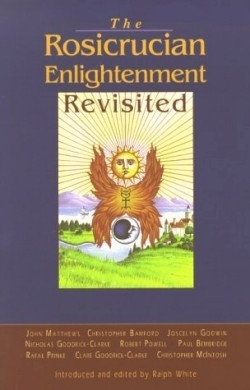The Rosicrucian Enlightenment Revisited
Though twice shrouded beneath its own inherent secrecy and with the solemnly laid dust of fallen centuries, the Rosicrucian mystery is realized nonetheless. Via its rich formative literature and with writings, which resonate its essence, Rosecrucianism eludes the risk of becoming a late renaissance period footnote. The mystery waits for those who thread its esoteric wisdoms, for whom its woven face is at last revealed.
With the Rosicrucian Enlightenment Revisited, the hearts and minds of scholars coalesce in a series of nine essays, which collectively delve deep within the mystery of Rosicrucianism. Representing a lost magical epoch, the movement simultaneously incarnated and transcended its historical boundaries, that period between the Renaissance and modern scientific ideology.
Based primarily upon two mysterious manifestos that surfaced in 1614 and 1615, the Fama Fraternitatis and Confessio respectively, the Rosicrucian theosophy described “…a new spiritual…revelation, that can elevate humanity to renew all arts and sciences so that humanity ‘might understand his own nobleness, and why he is called Microcosmus, and how far his knowledge extendeth into nature.’”
The manifestos trace the journeys of Christian Rosencreutz, a shadowy figure credited with founding the Fraternity of the Rosy Cross; a true reflection of the Hermeticism of its day—steeped in magic, alchemy and cabalism—cloaked in secrecy. Its hushed secrecy, one which offered no response to public enthusiasm, served only to deepen its mystique and fuel the controversy of its existence, which clouds it to this day.
The Rosicrution Enlightenment Revisited is the fruit of two academic conferences, both held in the Czech Republic where lush landscapes were certain to deftly inspire with their tangible history. The first conference was held in honor of English Renaissance historian Frances Yates, whose pioneering work in Rosicrucian study served to raise scholarly interest in a formerly occultist realm.
The essays present a sweeping portrait of Rosicrucianism examining the medieval symbolism of the grail and rose and lives of known Rosicrucians. It explores evidence of Rosicrucian theosophy in period literature, as well as the prehistory, resurgence and the legacy it has bestowed in silence.
Largely academic with an impressive listing of contributor credentials, there is little that snarls the book’s creditibility. It may best suit readers whose interests include historical accounts, religious studies or mystery religion topics. Novices may find themselves mired with seemingly vague or unfamiliar historical references, and writing styles understandably shift from pen to pen. Yet The Rosicrution Enlightenment Revisited remains accessible to a vast audience, as the mystery itself has endured by virtue of its humility and humanitarian appeal. It joins the very works it celebrates in restoring an ageless spirit and offering it the perennial blush of its inception.
Reviewed by
Karen Wyckoff
Disclosure: This article is not an endorsement, but a review. The publisher of this book provided free copies of the book to have their book reviewed by a professional reviewer. No fee was paid by the publisher for this review. Foreword Reviews only recommends books that we love. Foreword Magazine, Inc. is disclosing this in accordance with the Federal Trade Commission’s 16 CFR, Part 255.

